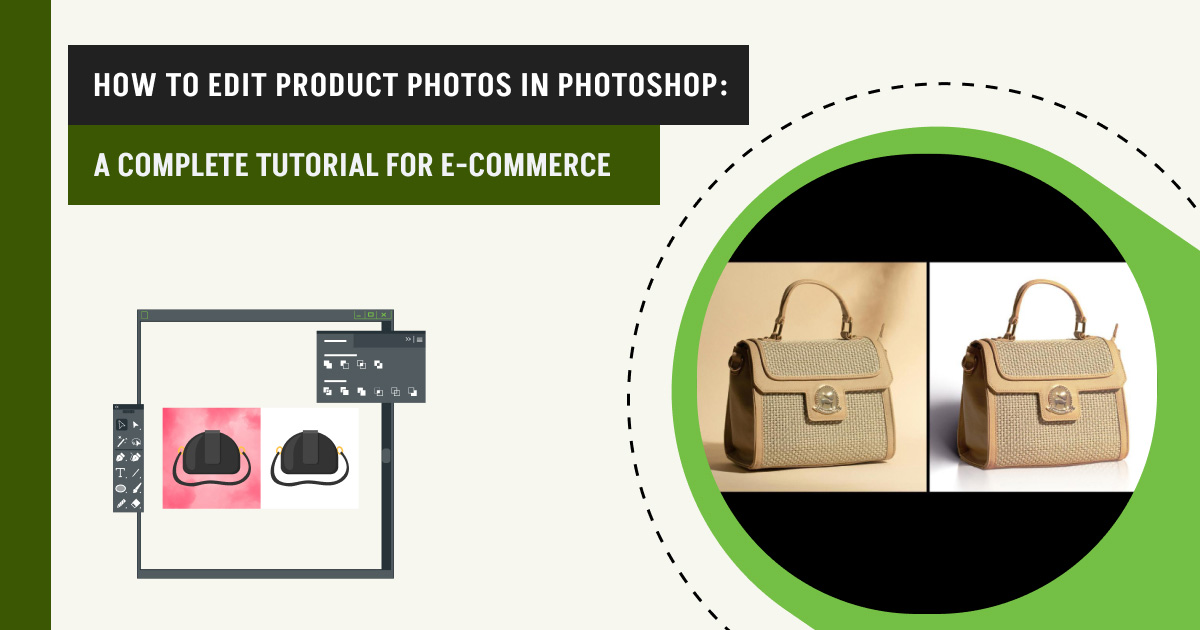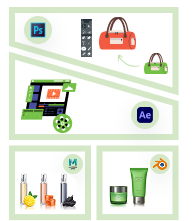The best product photo editing techniques in 2025 include a wide range of professional editing methods and smart Photoshop tools—used to enhance, retouch, and prepare images for high-converting e-commerce listings. The best product photo edits in 2025 help online sellers present their items in the most accurate, appealing, and on-brand way possible. Whether you’re working with a DIY photo setup or using professional lighting, these editing methods allow you to correct colors, remove distractions, and make your product photos consistent across your store.
The best product photo edits in 2025 include background removal, color correction, cropping, object selection, retouching, shadow creation, and adding reflections—all tailored to e-commerce standards. These editing steps ensure your product stands out, loads fast, and looks sharp across all devices and platforms. The best edits are clean, minimal, and focus entirely on the product, helping your brand build trust and boost conversions.
In this tutorial, we’ll guide you through the top Photoshop editing techniques to help you create scroll-stopping product photos. From isolating your object to polishing the final result, this guide will help you master how to edit product photos for e-commerce success in 2025.
What you’ll learn in this article
- 1 How to Edit Product Photos in Photoshop
- 1.1 Step 1: Duplicate Your Background
- 1.2 Step 2: Select Your Object
- 1.3 Step 3: Remove the Product Background
- 1.4 Step 4: Cropping Your Image in Photoshop
- 1.5 Step 5: Retouching Your Product in Photoshop
- 1.6 Step 6: Color Correction for Product Photography
- 1.7 Step 7: Add Shadow to Your Product Images
- 1.8 Step 8: Add a Reflection
- 1.9 Step 9: Final Touches to Your Product Images
- 2 Why Should You Edit Your E-commerce Product Photos?
How to Edit Product Photos in Photoshop
We will now guide you through a step-by-step approach to editing product photos in Photoshop. If you follow this process from start to finish, you will have incredible e-commerce photos in no time. We will show you quick methods and methods that are the most accurate, but will take more time. Try each method out for yourself to sharpen your Photoshop skills.
Step 1: Duplicate Your Background
As always, the first step in any Adobe Photoshop edit is to open your photo and duplicate the background.
You can use the Cmd + J (Ctrl + J for PC) shortcut or drag your Background over the “Create a new layer” icon at the bottom of the layers panel.

Step 2: Select Your Object
One of the most important steps in editing product photos in Photoshop is to have a clean background removal process. We will show you three different methods to remove your background, going from the fastest to the most accurate.
I purposely chose a product photo with a similar background where AI can find it hard to detect the product. We will show you how to fine-tune each method for the best results.
Method 1: Object Selection Tool
The Object Selection Tool is a godsend for e-commerce product photographers who want to edit specific areas quickly. This tool uses AI to automatically detect our product or uses our mouse as a guide to determine what object to select.
The Object Selection Tool was introduced to Photoshop in 2023, ushering in a wave of new AI features that speed up laborious processes.
Where To Find the Object Selection Tool in Photoshop?
The Object Selection Tool is in the right-hand toolbar, in the same section as the Quick Selection Tool and Magic Wand. Right-click the icon to switch between these tools.
Select Your Subject
The Object Selection Tool has a button in the top toolbar to the right that can automatically detect the main object in the image. This is best if you have shot your object in a plain environment where no other elements are in the shot.
If this selection doesn’t work, use your mouse to hover over the image. When an object is detected, you should see a pink overlay on your product.
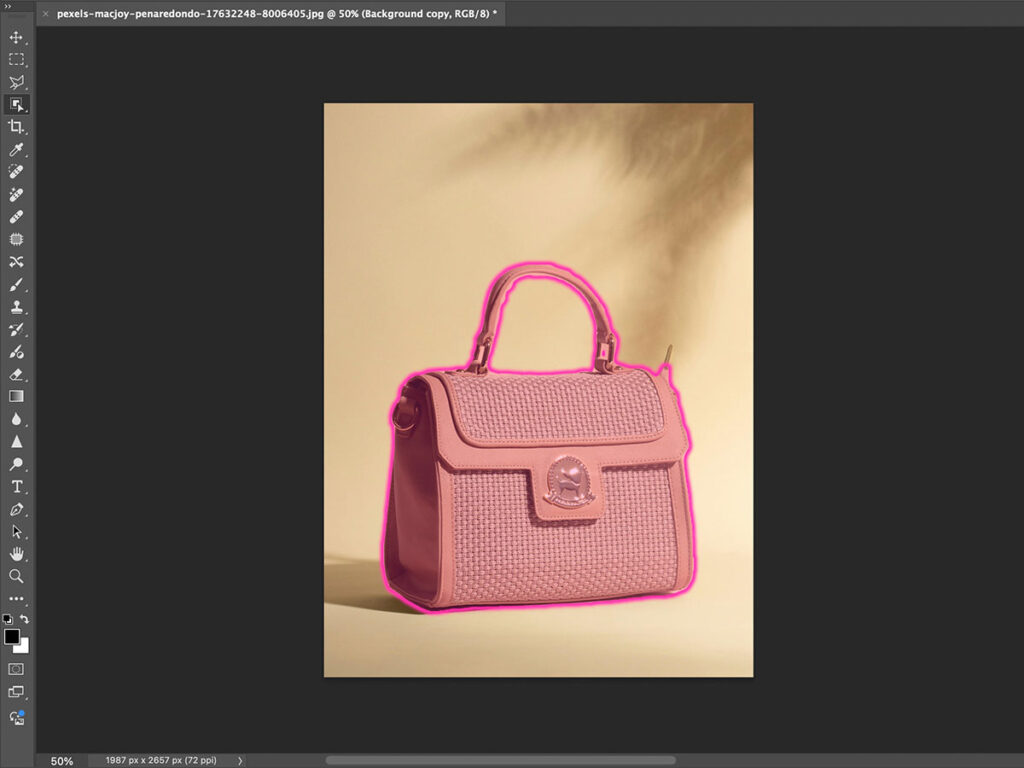
Click this overlay, and the area will be selected automatically.
Adjusting Your Selection
Ensure that the “marching ants” dotted line covers every part of your product.
A simple shape will likely yield perfect results. However, more detailed products, like this handbag, have a few things to look out for.
Zoom in to at least 100% (we recommend 200%) and trace the shape, looking for inconsistencies.

Remember these, and click the “Select and Mask” Button along the top toolbar. This will open up a specialized dialog box.
The Select and Mask box has a range of features to help you fine-tune your selection. Here, you can refine your selections for products with fur.
To refine your selection, find the Refine Edge Brush Tool in the new toolbar to the left.
Set your Edge Detection to around 2px and tick Smart Radius.
We also recommend putting Smooth at 1 and Feather at 0.5px.
Use the Positive brush to select the areas missing from the selection. This may take some playing around, so use the Negative brush to counter the selection spreading out of the object.
Press OK or Enter on your keyboard once you have cleaned up your selection.
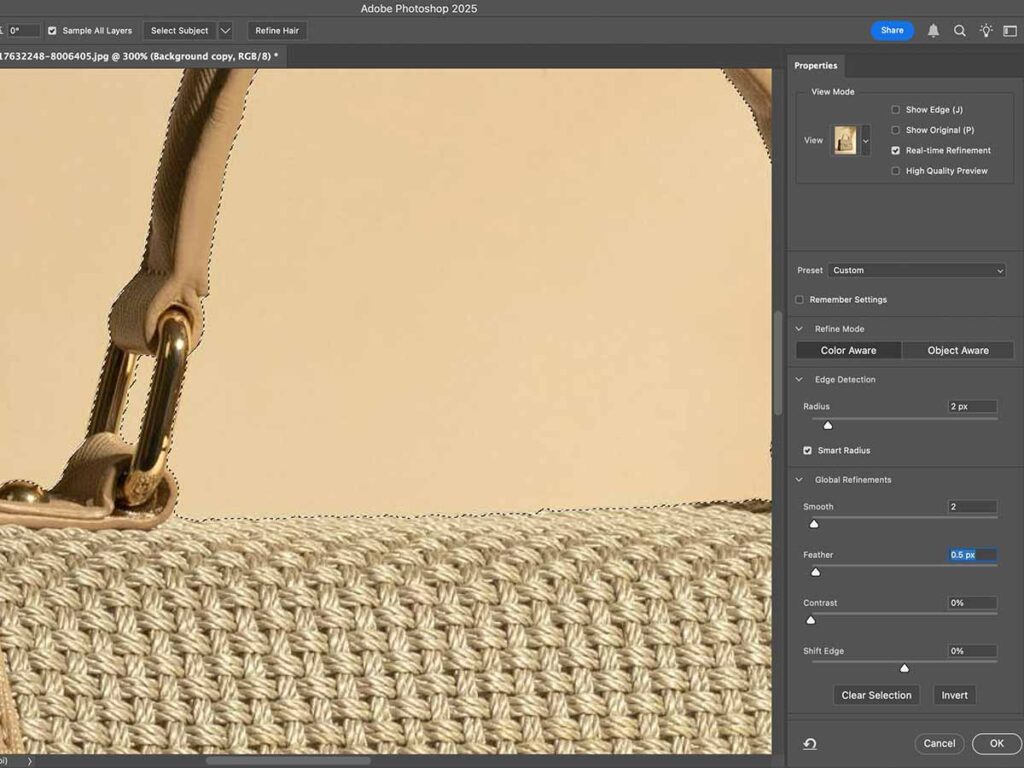
Method 2: Quick Selection Tool
The Quick Selection Tool used to be the fastest method to select your product in Adobe Photoshop.
The Quick Selection Tool is located on the left-hand toolbar near the top. Its icon is a paintbrush and a dotted circle.
Step 1: Select Your Subject
Expand your brush size and paint directly onto the object. The dotted line will expand to the areas it thinks are part of the object. Follow around the object until all areas are selected.
You can also use the Select Subject option along the top toolbar to give you a good start.
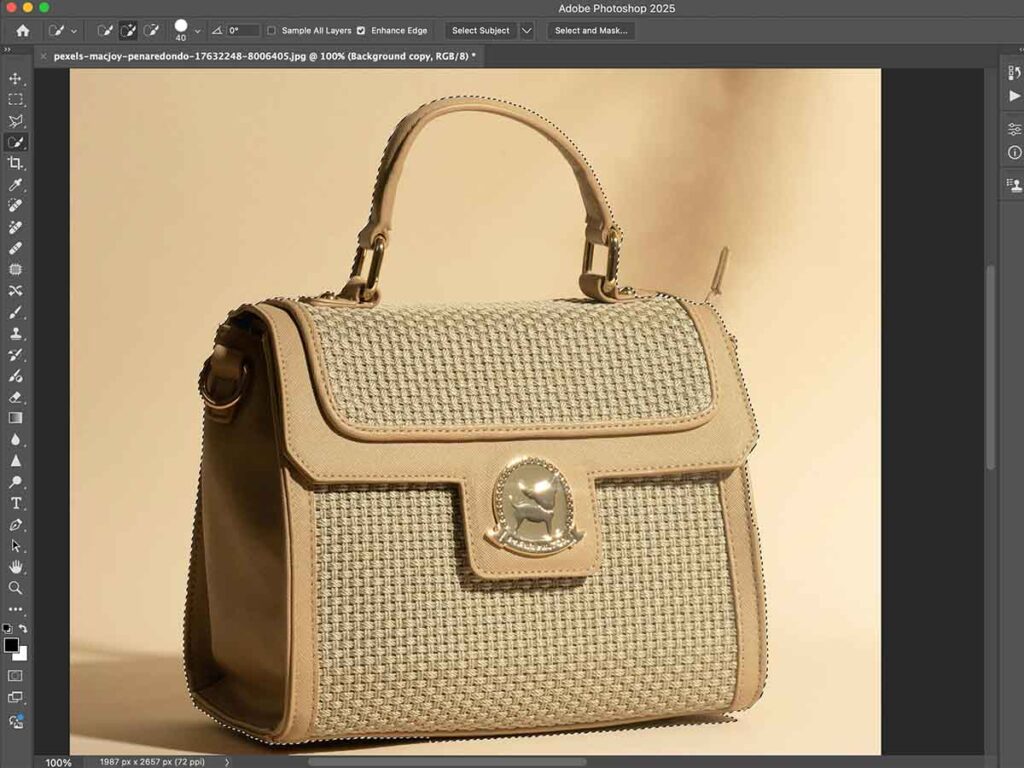
Step 2: Adjusting Your Selection
You most certainly have areas that are not part of your object. To fix this, use the “Add to selection” and “Subtract from selection” brush options along the top left.
To perfect your selection, zoom in to 200% and switch between the brushes and sizes.

Method 3: Create a Path
If neither of these options gives you the accuracy you need, you will have to create your own path using the Pen Tool. The Pen Tool is the most accurate but longest method of creating a path in Photoshop.
If you want to be a professional photo editor, you should get familiar with using the Pen Tool. Find the Pen Tool at the bottom of the left-hand toolbar.
Step 1: Trace Around Your Subject
The Pen tool is so accurate because you can set the anchor point by clicking, holding, and dragging the line to best fit the curve between the points. Do this every time the shape varies its direction. Make sure you do this at least at 200% zoom.
Do this around the entire Object. It may take a long time, but it is worth it for accuracy.
After connecting to the final point, click the “Selection…” box along the top toolbar.
The Make Selection dialog box will appear. We recommend putting a 1 or 2 px Feather Radius in.
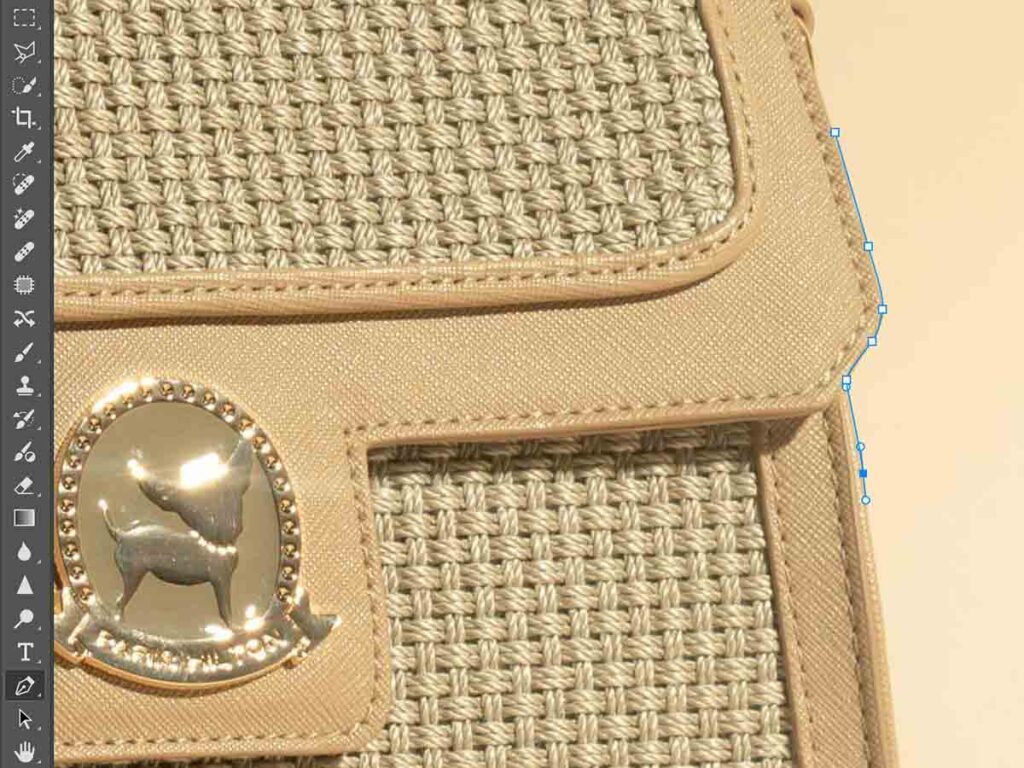
Step 2: Fill in Missing Areas
Once you have traced the object, you can cut out the areas where the product has gaps.
When you have connected the dots, make it a selection again. This time, when the Make Selection Box appears, select Subtract from Selection. Also, make sure you put in the same Feather Radius.
This should give you multiple dotted lines. Repeat this process for every gap in the shape.

Step 3: Remove the Product Background
Inverse Your Selection
We now want to inverse our selection. Use the shortcut Cmd + Shift + I (Ctrl + Shift + I for PC). Alternatively, go to select along the top toolbar and click Inverse.
The dotted lines should look the same. The difference should be that a dotted line runs along the outside of your frame.

Delete The Background
Now, you can press backspace on your keyboard to delete the background of this layer.
If a dialog box comes up, you forgot to make a duplicate layer.

Create a New Solid Color Layer
- Click “Create a new fill or adjustment layer” along the bottom of the layers panel. The icon is a circle divided into two, each semicircle in a different shade.
- Select “Solid Color…” A Color Picker dialog box should pop up, allowing you to choose the exact color you like. We recommend using white.
- Press OK and drag this layer below your background layer, which should be called Layer 1.
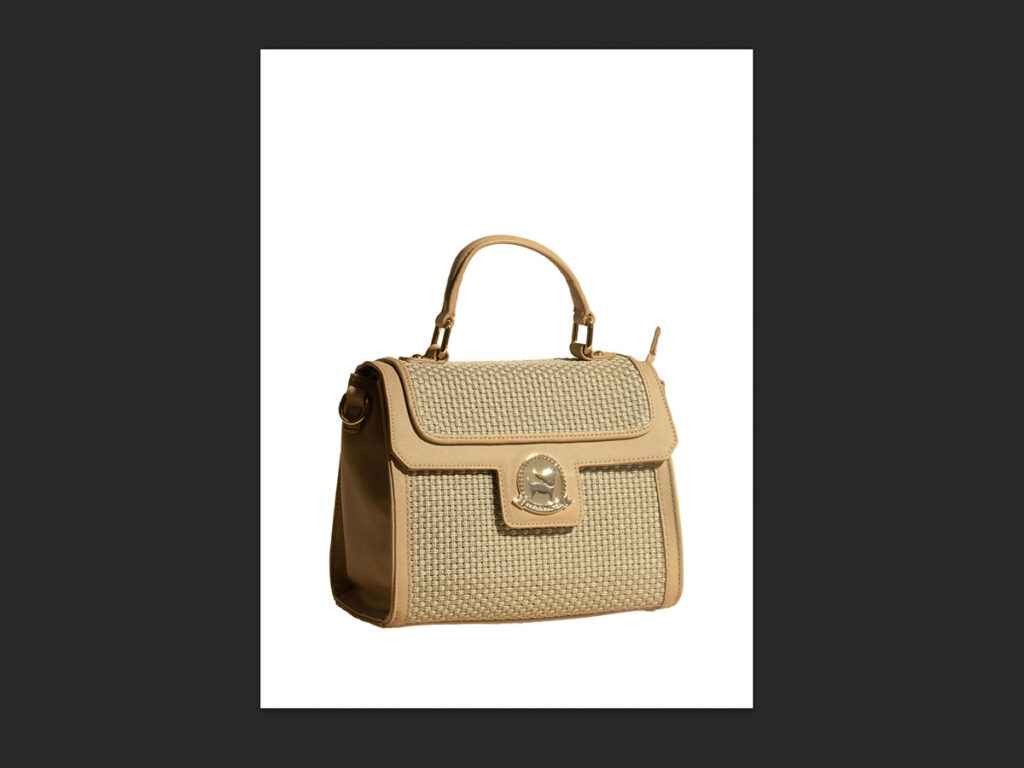
Step 4: Cropping Your Image in Photoshop
Now that you can see what your product photography edit in Photoshop will look like, we want to crop it to the best dimensions.
Think about the platform on which the picture will appear. If it’s social media, you may want to use a square. If it’s part of a series of images, make sure they are the same dimensions. Find the Crop tool along the left-hand toolbar.
Straighten Your Product
Now that you can see your object without any distractions, you might notice your product isn’t straight. Straighten the image before you crop so you don’t have to readjust the crop afterward.
Method 1: Straighten Tool
- Along the top, the crop tool has a straighten tool. Click the spirit level icon.
- Pick a straight horizontal or vertical line on your product. If you don’t have this, you will have to use Method 2.
- Pull the line to the distance to adjust the angle. When you let go, the image should be straight.
- Use Cmd + Z (Ctrl + Z for PC) to go back and perfect the angle.
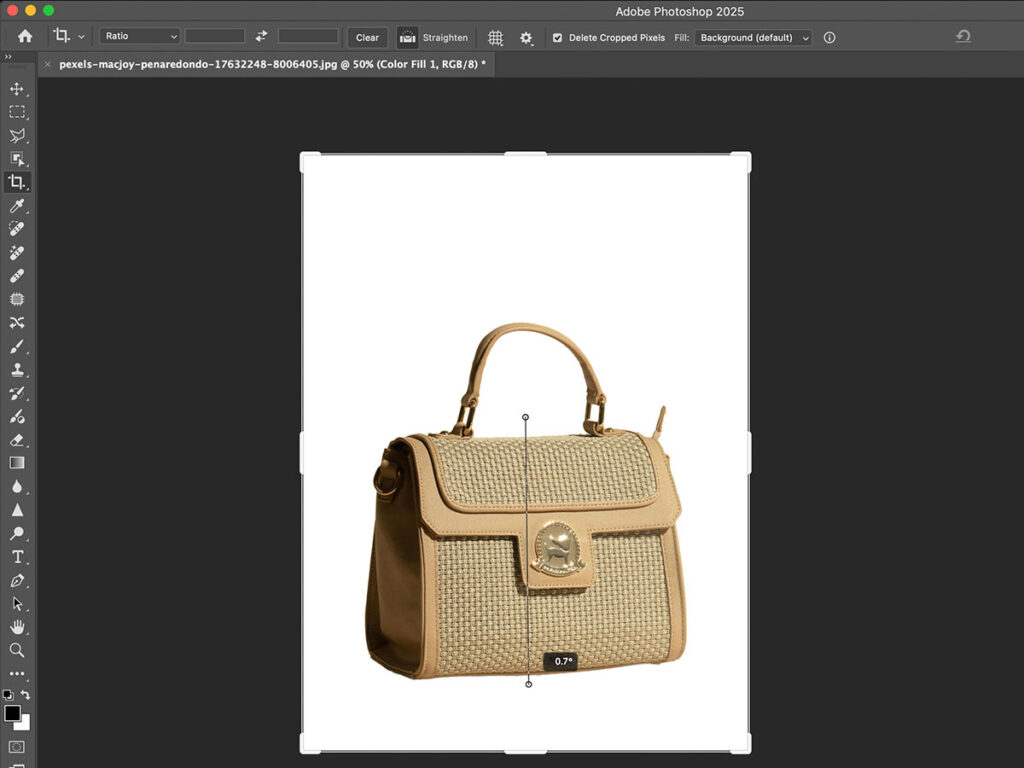
Method 2: Manually Adjust
You can click and drag outside the photograph to adjust the angle when using the Crop tool. Take note of the degree increments in case you need to make another slight adjustment.
We prefer using this method because once you start rotating the image, you will see a grid overlay. This makes it easy to perfect your product.
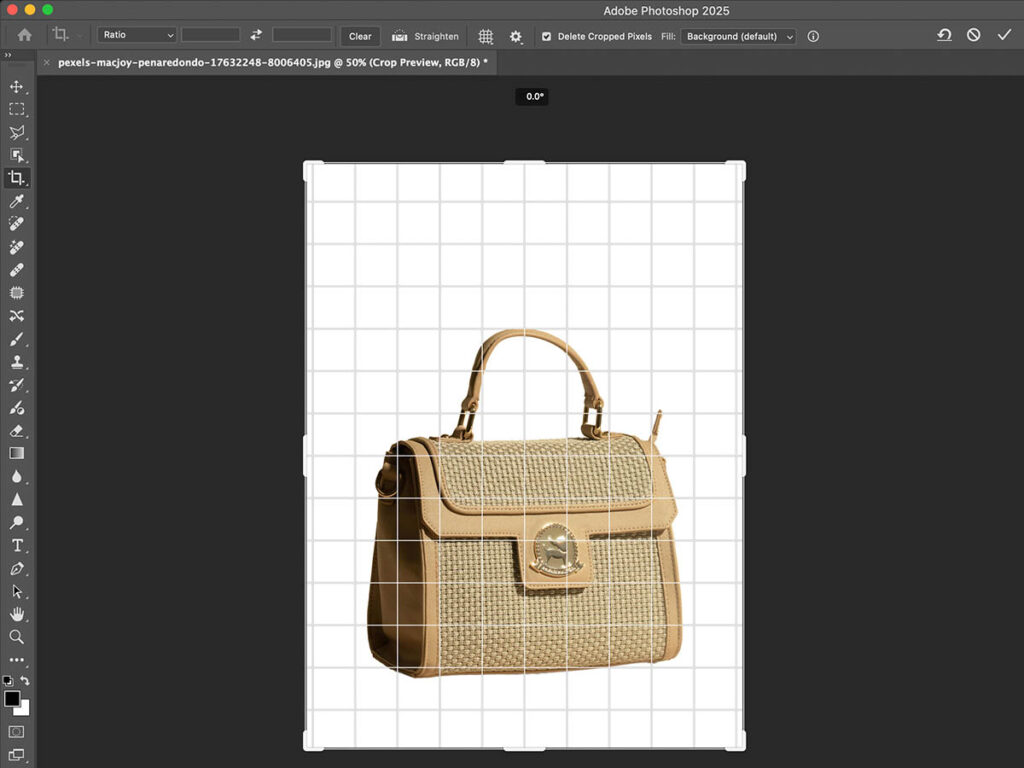
Method 3: Crop the Product
With the crop tool selected, drag the sides of the image inward.
Use the Ratio dropdown menu along the Crop toolbar at the top to select from a range of different aspect ratios. The boxes next to this allow you to set a custom aspect ratio.
To keep the image dimensions the same as the original, drag one of the corners while holding the Shift button. Make sure you use compositional techniques like the rule of thirds to perfect your crop. Photoshop helpfully brings up a rule of thirds overlay when adjusting your crop.
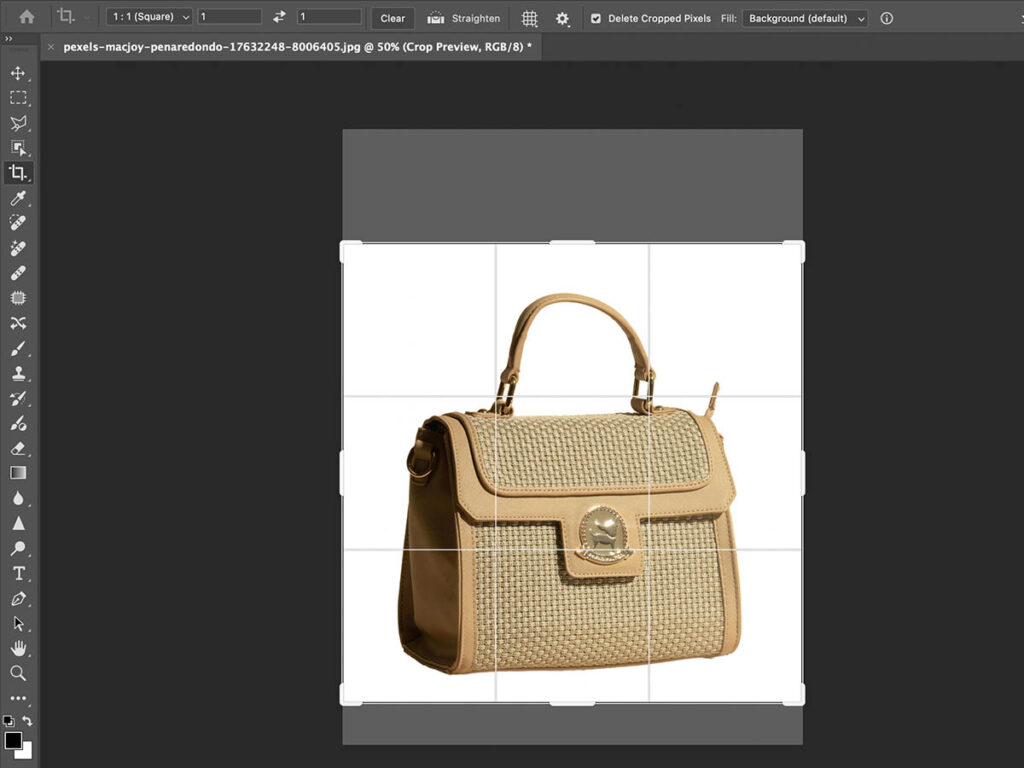
Step 5: Retouching Your Product in Photoshop
With the image close to finishing, we need to ensure all the finer details are perfect, as all attention is now on the product.
Spot Removal
When people say, “We can fix that in Photoshop” this is what they mean. All blemishes, dust, and marks can be removed using the spot removal tools. Ensure you select the right layer when working with spot removal in Adobe Photoshop.
Method 1: Spot Healing Brush Tool
- The Spot Healing Brush Tool is Photoshop’s quickest method to remove blemishes.
- Adjust the brush size, zoom close into the image, and click (or click and drag) over the bits you want to remove.
- The AI will struggle with certain patterns, so you may have to use the Clone Stamp Tool.
Method 2: Clone Stamp Tool
The Clone Stamp Tool is more accurate but can be tricky.
Make sure the Opacity and Flow are at high numbers to ensure a smooth and believable edit. Hold down the Option (Alt on PC) to select an area with a similar texture/color/ shade as your desired area. Click or paint over the area. If you notice a different shade or pattern, you must adjust your anchor point until it’s perfect.
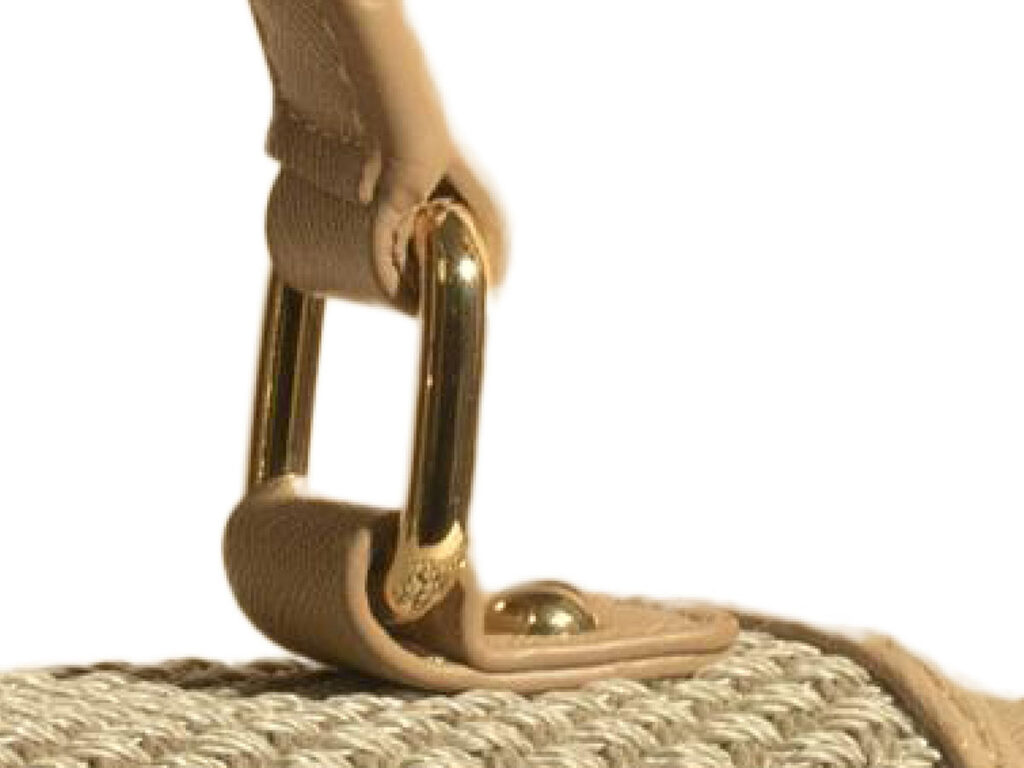
Tonal Adjustments
Now is the best time to make tonal adjustments. Use the Levels and Curves Adjustments to fine-tune your product. The product I am working on is too dark in the shadows to the left.
Notice how the color can change when adjusting the tones. This is why we leave the next step until after your tonal adjustments.
Step 6: Color Correction for Product Photography
Color correction is key to making our product look as attractive as possible. Use the Color Balance and the Hue/ Saturation adjustments to make these edits.
It is helpful to have the product with you when color correcting to ensure you capture the right colors.
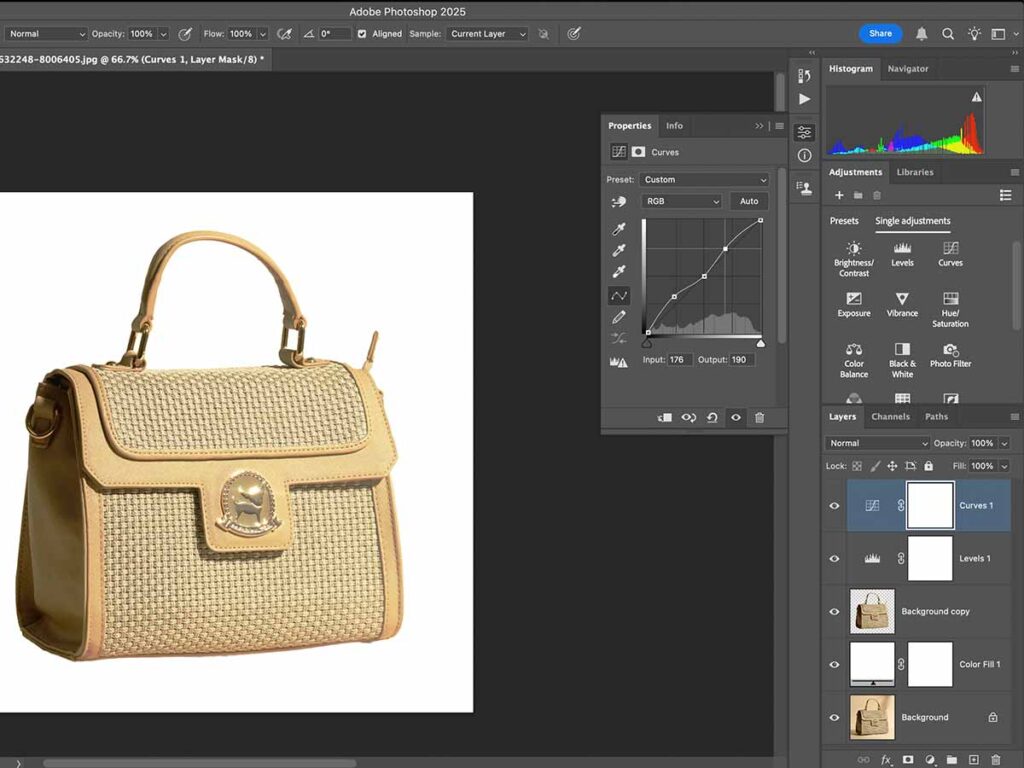
Step 7: Add Shadow to Your Product Images
Creating a shadow for your product in Photoshop transforms your edit from a flat image to a three-dimensional photo. Adding this extra element makes it look like the product is jumping out of the image.
Add the Base Shadow
Begin by identifying where the light source is coming from. Use the original photo to help. Create a New Layer below your cut-out image and have this selected. Select the Polygonal Lasso tool and trace the rough dimensions of the bottom of the product.
Complete the selection well out of the frame while mimicking the direction of the shadow. Press Option + Backspace (Alt + Backspace for PC) to fill this area in black.
You may need to repeat this step to make the direction look believable.
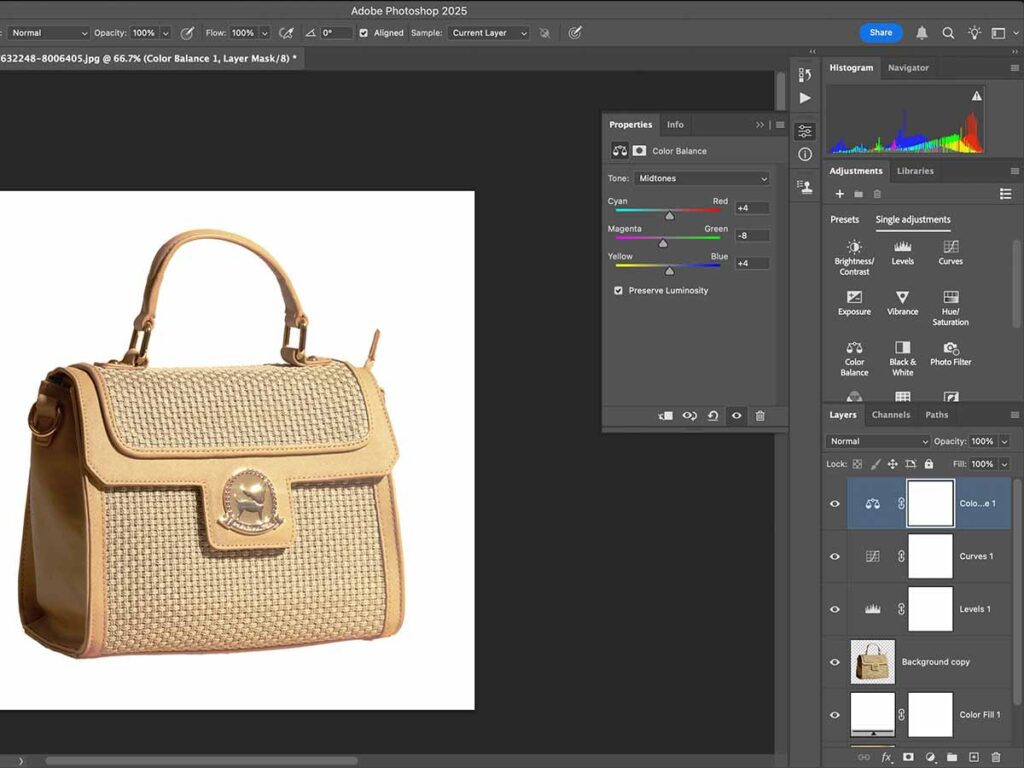
Add a Blur
We all know shadows don’t have defined edges like this. Let’s add a blur that increases as the distance increases from the object.
- Start by going to Filter > Convert for Smart Filters. This will allow you to edit the layer later if necessary.
- We will use the Tilt-Shift Blur. Go to Filter > Blur Gallery > Tilt-Shift…
- Move the Middle Point to a point around the center of your product. Edit this according to your product/ shadow shape.
- Tilt the direction of the filter to mimic the shadow direction.
- Change the Blur slider under the Blur Tools panel along the right-hand side of the screen. Edit this to your preference. We recommend a high number like 180px.
- The two lines around the center line will set where the blur starts, and the two lines further out will set where it ends.
- Only use the lines in the same direction as your shadow. Edit these lines until they have a believable shadow.
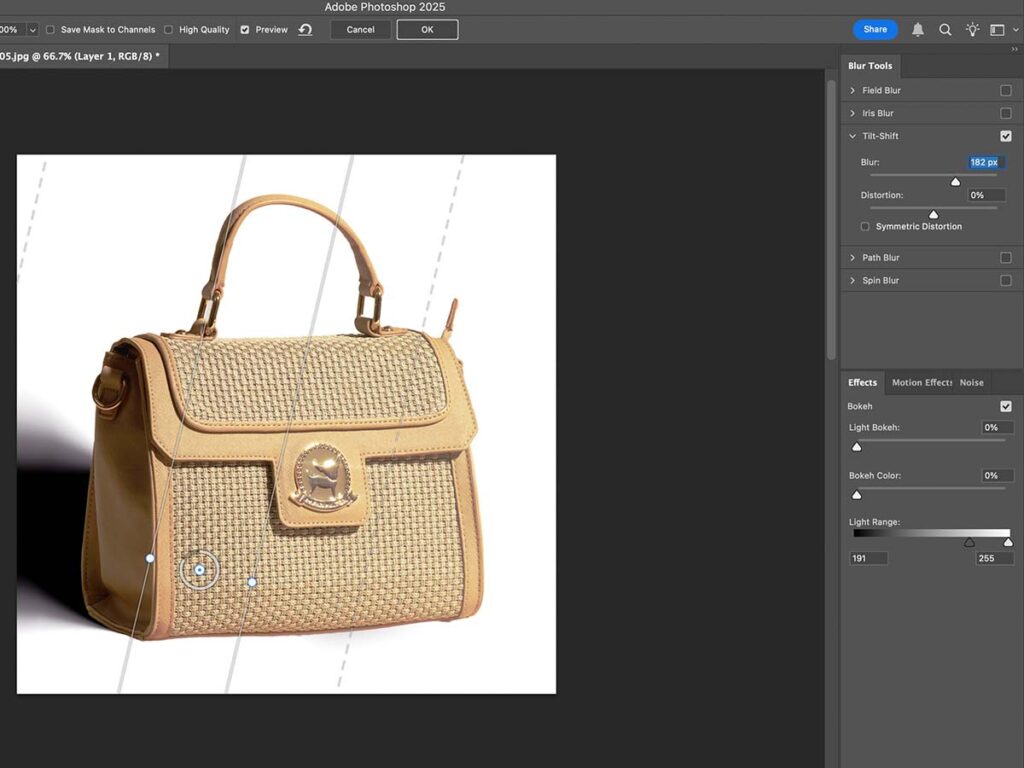
Fine-Tune Your Product Shadow
We will now add a gradient to fade the shadow that’s further away.
- Select your shadow layer and click Layer Mask at the bottom of the layer panel. The icon is a rectangle with a circle cut out.
- Select the Gradient tool along the left-hand toolbar.
- With the mask layer selected, click on the product near where the shadow starts and drag a gradient toward the shadow.
- You can edit these two points to your liking. Make sure the shadow has a believable fade.
- For additional fine-tuning, get a brush with 0% Hardness and low Opacity, and brush away the areas that don’t look right.
If you want the shadow to be even more subtle, you can reduce the Opacity of this layer at the top of the Layers panel.
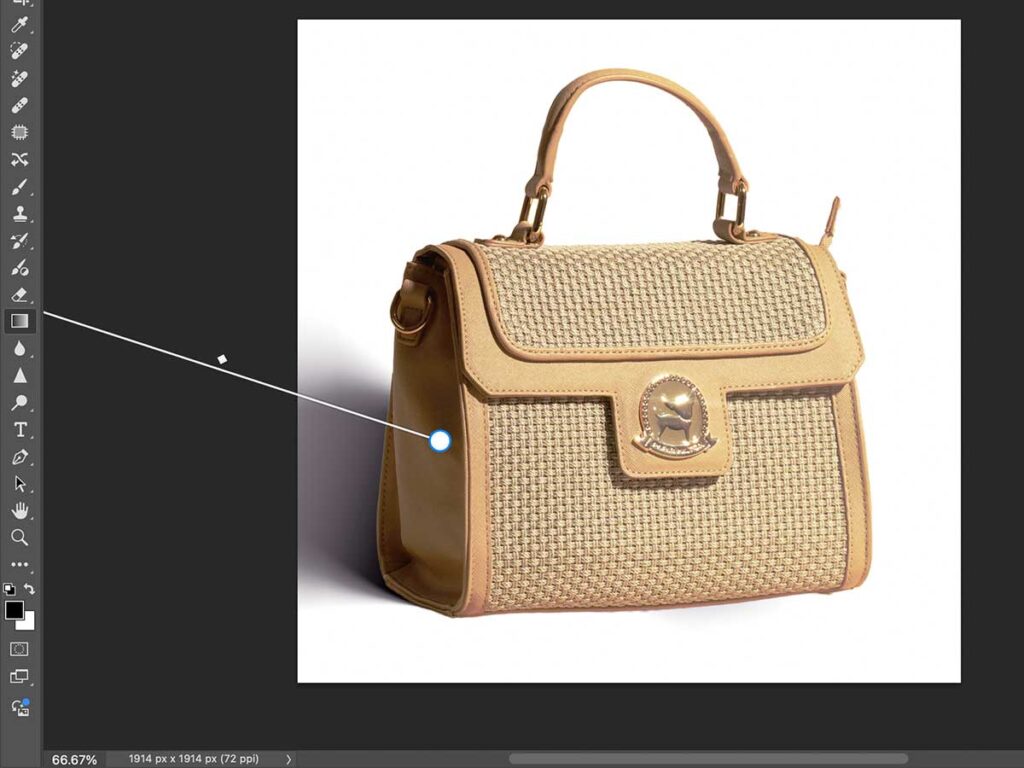
Final Touch
All shadows are much darker where the object touches the surface. To replicate this, we will manually draw in a dark line.
Start by creating a new layer. Make sure this layer is below the main product layer like before.
- Select a Brush tool with 0% Hardness and 100% Opacity and Flow.
- Make the brush very small and zoom into the product’s bottom edge.
- Click on the product edge to show only half of the brush circle.
- Shift-click along the bottom of the product. Do not worry about keeping it extremely accurate, as this will add some dimensionality.
Finish by reducing the Opacity of this layer.
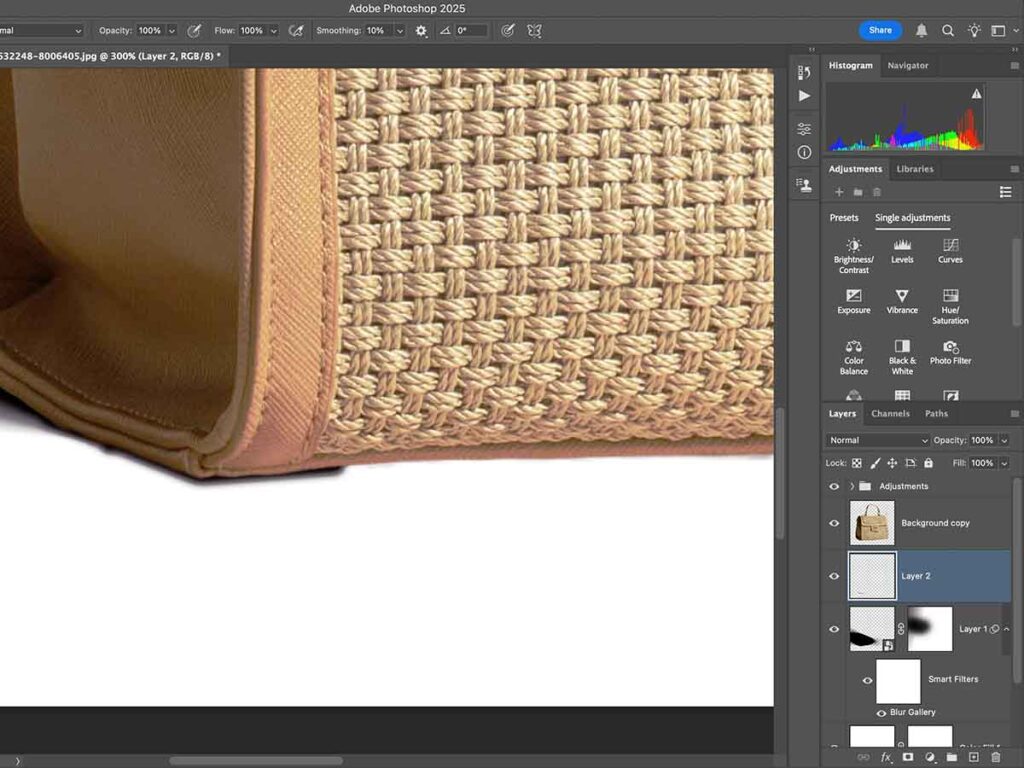
Step 8: Add a Reflection
You can finish your edit with a simple shadow. To make your product stand out even more, add a reflection.
Set Up the Reflection
Start by duplicating the top layer of your cut-out product. Either drag the layer over Create a New Layer or press Cmd + J (Ctrl + J for PC). Move this layer just below your original one.
Press Cmd + T (Ctrl + T for PC) to enter the Transform mode. Right-click the product and select Flip Vertically.
Drag the layer down so the final points of the product overlap. The new layer should be behind and tucked below the main product image.
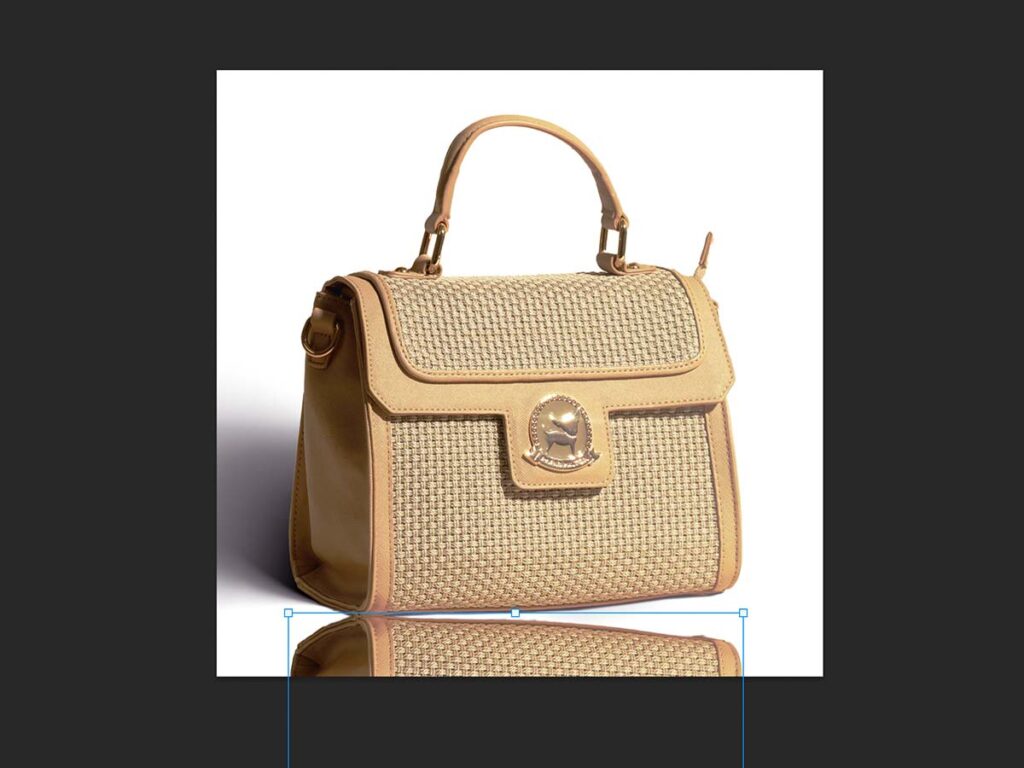
Perspective Warp
- Go to Edit > Perspective Warp.
- Drag a box to match the larger surface of the inverted product. As you cannot see the end of this duplicate, roughly mimic what this shape will look like.
- Drag out an additional rectangle for the other surface. This should connect to your other shape.
- Click Warp along the top toolbar.
- Pull the outer points to connect to the product, similar to the point tucked underneath it.
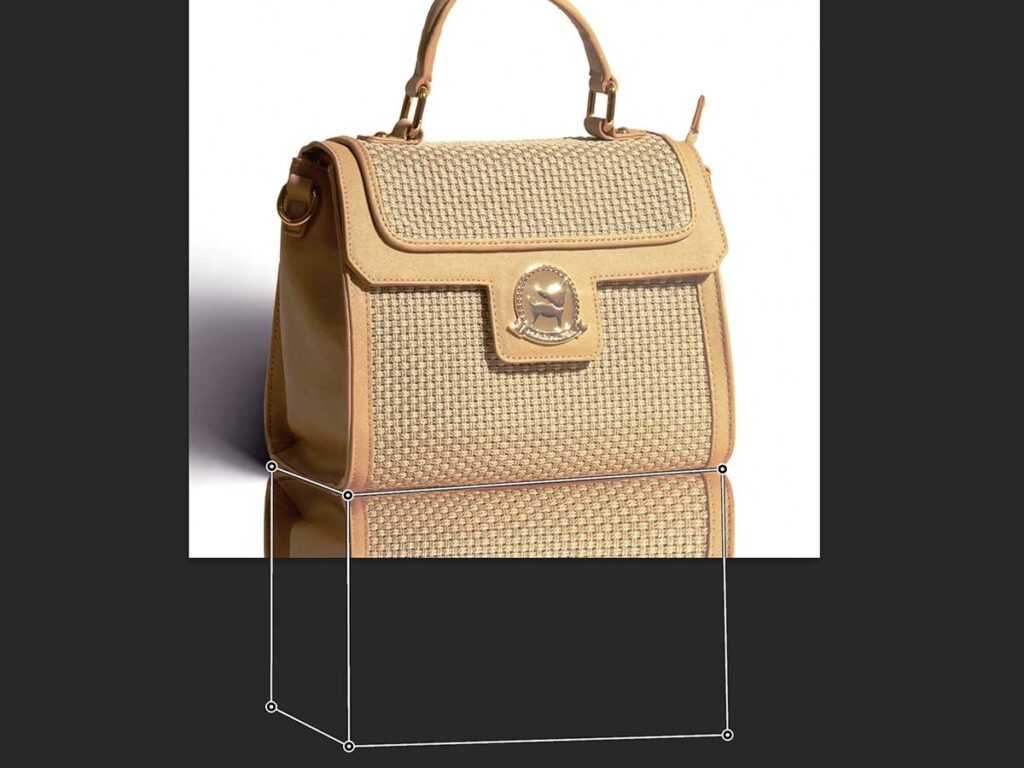
Blur the Reflection
We want to blur the reflection in Photoshop to achieve the true reflective effect.
Use the same Blur as above (hyperlink to Add A Blur above), but this time, position the blur horizontally.
Like before, create a mask and add a gradient (hyperlink to Fine Tune Your Shadow above). Fine-tune this selection in the same way.

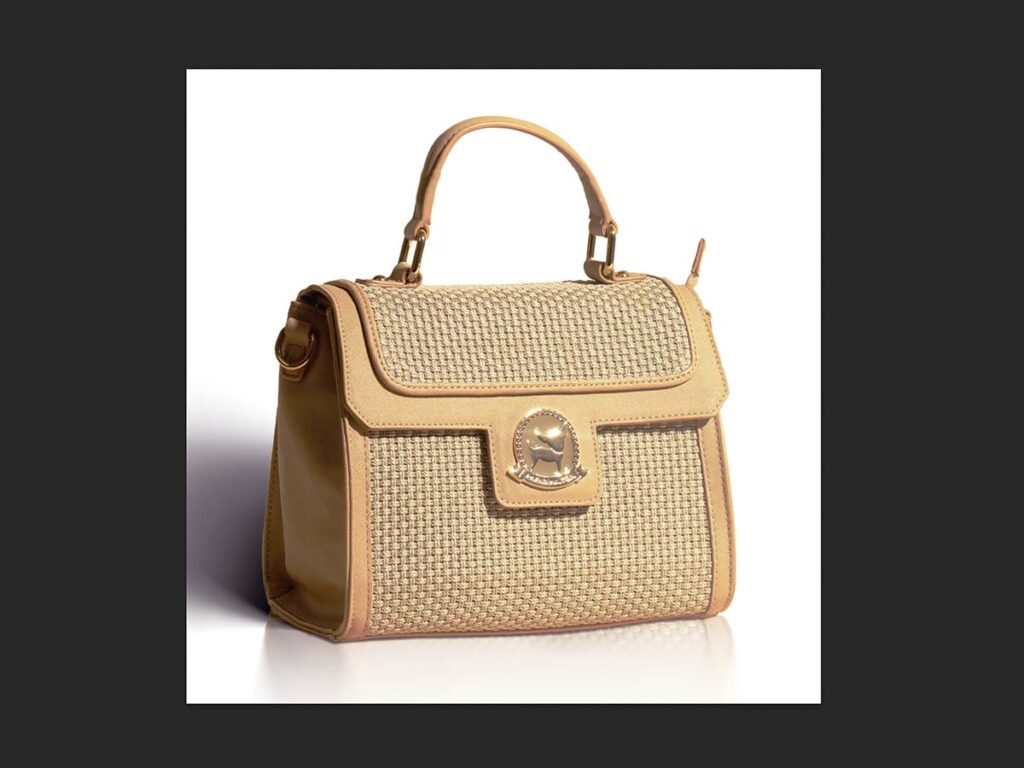
Step 9: Final Touches to Your Product Images
You now have a professional product photograph in Photoshop. The next step is to add final touches and export your image.
Adjust Sharpness
The final adjustment to and edit in Photoshop should be to add a touch of sharpness.
- With the main product layer selected, go to Filter > Sharpen > Unsharp Mask.
- You can adjust this to your liking, but we suggest a 1 px Radius and a 20-30% Amount.
- Ensure you don’t go overboard, as too much sharpness can make the product look worse.
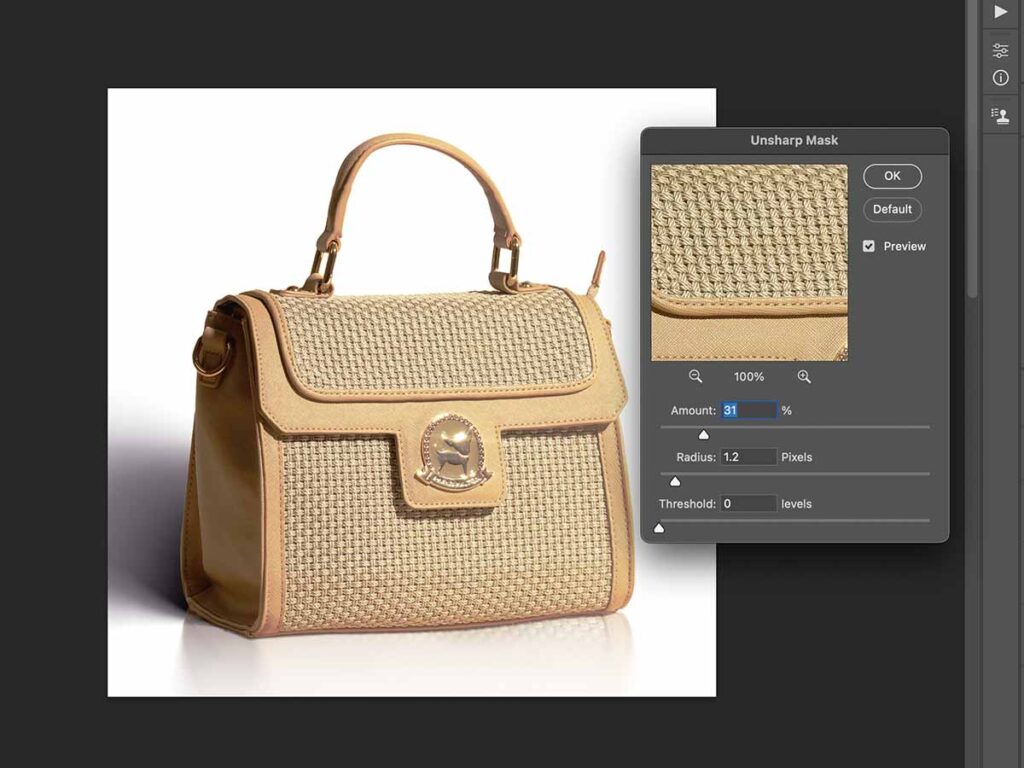
Exporting for Web
Consider where your product photos are going to end up.
- Go to Image > Image Size.
- First, ensure you have the right Resolution. Web images should be at least 72 dpi (Pixels/Inch).
- Amazon requires images to be at least 1000px on the longest side. Instagram uses posts at 1080 x 1080 px. For portraits you can make it as large as 1080 x 1350 px (4:5 aspect ratio), and landscapes 1080 x 566 px (1.91:1 aspect ratio).
- Click Ok after you make your adjustments.
- Then go to File > Export > Export As…
- Check your final sittings and export.
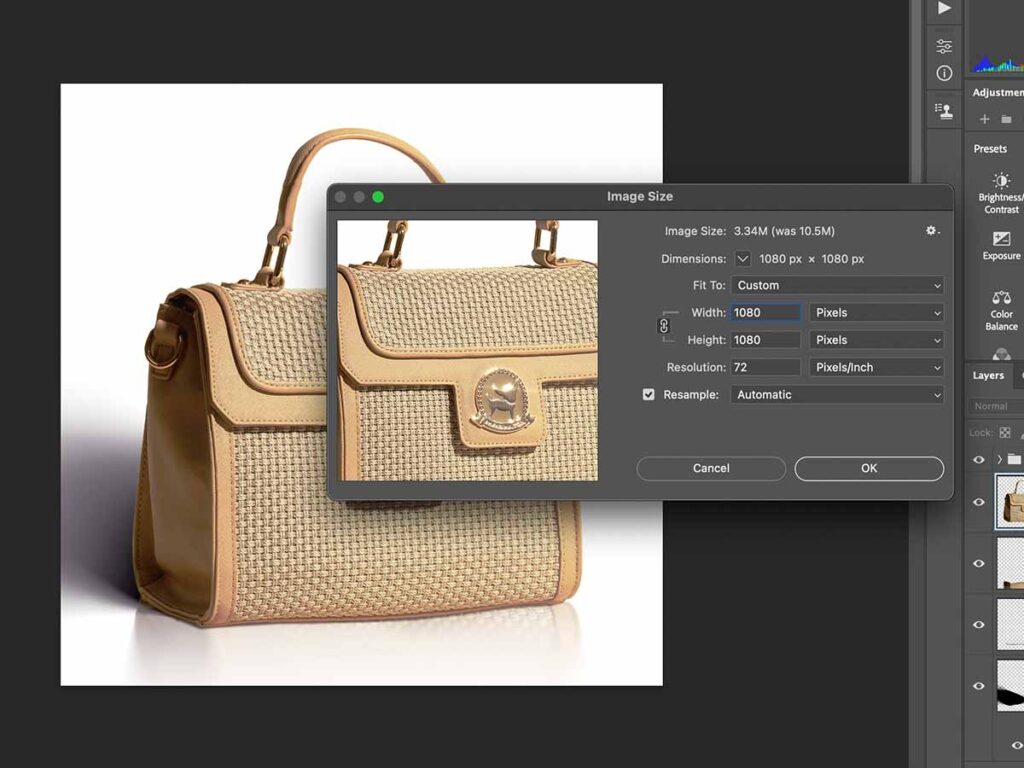

Why Should You Edit Your E-commerce Product Photos?
You should edit your e-commerce product photos to create a professional and appealing online store, as it provides buyers a physical store-like experience, builds trust, and drives sales by showcasing products in the best possible light. The demand for e-commerce product photos has exponentially increased, impacting on global market.
A 202 report published in Business Research Insights titled E-commerce Product Photography Market Research Market Size, Share, Growth and Industry Analysis, By Type (Hardware, Software & Services), By Application (2D Photography, 3D Photography), and Regional Forecast to 2033 states that global e-commerce product photography market size is expected to reach $2 billion by 2033. Other reasons to edit e-commerce product photos are as follows.
- Creating First Impressions That Matter
Raw photos are messed up; not suitable to publish. Image retouching allows e-commerce businesses or brands like yours to eliminate those unwanted flaws, distractions, and overall visual aesthetic without losing quality. In the absence of physical interaction, buyers prioritize only high-quality product images.
- Highlighting Product Features
Close-ups, zoom-ins, lifestyle, and enhanced textures help customers examine product details and uniqueness, reducing uncertainty and potential returns. Whether it’s a food item, a clothing item, or a fashion accessory, uniform lighting, backgrounds, and styling across all product visuals improve the shopping experience and boost brand recognition.
- Removing Distractions and Flaws
Unwanted shadows, dust, scratches, or imperfections steal product focus. E-commerce product image editing services like background removal, color correction, shadow adding, clipping paths, and others make products stand out in crowded marketplaces and increase click-through rates.
- Adapting to Different Platforms & Devices
You can’t publish any images to any platforms, but the edited ones are. Photo editing experts ensure your product images fulfill different e-commerce platforms (Amazon, Shopify, eBay, etc.) and devices (mobile, desktop, and social media). Professional photo editors work on necessary corrections, adjustments, and overall improvement.
- Improving Loading Speed and SEO
Well-optimized and high-resolution images load faster on any device, reduce bounce rate, and alt-tagged images also improve search engine rankings. Also, you provide consumers 360-degree views and feature-rich visuals that create an immersive shopping experience.
These are some of the reasons why you need to edit product photos in Photoshop. Almost all major brands and e-commerce sites hire freelance photographers and outsource photo editing to make their products stand out.
How Can You Make Your Product Stand Out?
To make your product stand out, use Photoshop to remove your product from a busy background, add a shadow and reflection to highlight it, adjust colors, tonal range, and saturation to make your product more prominent.
How Do You Make All Your Product Colors Consistent in Photoshop?
To make all your product colors consistent in Photoshop, do a batch edit of your images. Later work on white balance and lights, in case batch edit doesn’t display the product in the best light.

